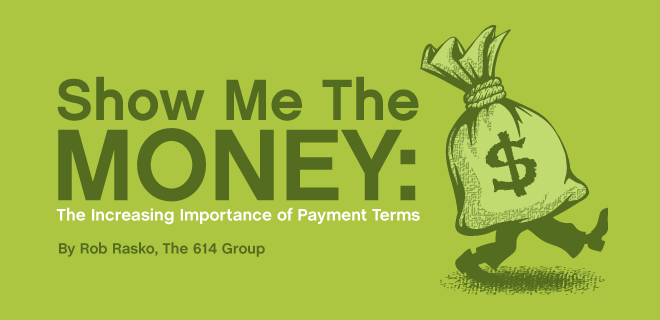
As the growth of programmatic transactions has reached nearly 50% of all inventory bought and sold, there has been a global proliferation of ad marketplaces for publishers to consider when developing and evolving their indirect monetization strategies. While Google’s DoubleClick Ad Exchange and AppNexus may dominate the conversation, there’s no shortage of supply-side partners for publishers to consider, and an even wider range of reasons to pick one over the other.
Garnering premium publisher business is highly competitive for these supply pools. In our recent survey of publishers, more than two-thirds of publishers work with three or fewer marketplace partners. However, there is a divergence of opinion between what publishers find important and what marketplaces think publishers find important – starting with how quickly payment is delivered.
During the months of July and August 2015, The 614 Group fielded a survey in partnership with AdMonsters, hitting all of the top 1,000 publishers in the US and receiving completed responses from approximately 100 publishers. Eighty percent of respondents consider a marketplace’s payment terms to be a key factor when choosing monetization partners. However, marketplaces have yet to seize on this opportunity as a potential advantage as payment terms continue to trend longer rather than shorter.
Marketplaces have been slow to move on their holistic view of why partners work with them. They have focused on standard metrics such as: Who delivers the highest bid for my impressions? Who delivers the most bidders on each of my impressions? Who can fill more of my inventory? All of these are valuable from an impression-by-impression and revenue-generating standpoint, and their importance is reflected in the marketing language across most marketplaces.
But why have marketplaces left payments off their radar? A few anonymous sources relayed consistent points. Marketplaces are constantly in a battle with advertisers to get funds faster and therefore are actually making advanced payments to their partners; the faster they pay the more funding they need. Also we heard loud and clear that marketplaces didn’t feel the pressure from publishers to change their terms, something we feel we can help with through this platform.
Increasing accounts receivable columns makes it harder for growing publishers, or any business for that matter, to invest back in the growth of their business. The seemingly endless refrain of “I can’t pay you until I get paid” continues to lengthen as the value chain between advertisers and publishers grows more crowded with each new vendor.
Publishers of all sizes are struggling with partners that don’t stick to their payment terms. According to Brie Manukul, VP of Revenue Operations at Mashable, “It is so important that people honor their payment terms to ensure we get that money in house to reinvest that back into the company. All things being equal, we’d allocate more inventory towards channels where we get paid faster.”
The industry has already seen payment terms ballooning to 180 days and further on the agency side of the business. Publishers are even more susceptible, having less leverage than multi-billion dollar multinational holding companies do.
Payment terms are tremendously important to publishers, yet often seen as just a standard part of a contract from the marketplace. While 80% of publishers consider payment terms when evaluating a marketplace, more than 85% find it at least “somewhat” important, with 60% saying it is “very” important and nearly 10% saying it is the “most” important factor in their consideration.
“That is a huge, crucial piece for me,” said Manukul. “If one partner offers me Net 45 and another offers Net 60, that is going to weigh heavily on my decision.”
One reason payment terms aren’t discussed enough is that billing departments are siloed from the rest of the evaluation process. With so many factors to consider, the finance departments or billing operations don’t necessarily get as much say as they should.
Daniel Todd, CEO of mobile rewards platform Influence Mobile, is intimately familiar with the challenges of financing high-growth start ups.
“Everyone wants to have money sooner than later, but depending on your growth trajectory, it becomes either a minor irritation or massive roadblock to growth,” Todd said. “Our model was working but we became very cash constrained because we were a small startup that was growing quickly. Even though we could turn a profit on our marketing dollar and spend that dollar again, there was a built-in seven-week wait no matter how fast we could grow. Speeding up that turnaround was critical to our growth trajectory.”
Todd was able to reduce the 7 week turnaround into 7 days by working with third-party financial platforms. Third-party financial platforms for a fee enable both the buy-side and sell-side to close the transactional loop and accelerate their reinvestment of capital.
From the perspective of both publishers and marketplace operators, I believe that there will be more attention paid to the financing of the ad ecosystem. Both sides of the transaction benefit from speeding up payment terms, and there is no shortage of third-parties who are willing to audit or guaranty the quality of impressions; minimize fraud; and deliver human traffic. Right now, there is a tremendous opportunity being missed, but one that is not likely to be overlooked for very long.